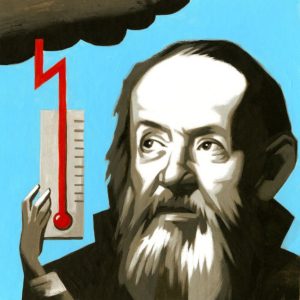Modern instruments made accurate forecasting possible, but humans have tried to predict the weather for thousands of years.
The Wall Street Journal, August 31, 2019
Labor Day weekend places special demands on meteorologists, even when there’s not a hurricane like Dorian on the way. September weather is notoriously variable: In 1974, Labor Day in Iowa was a chilly 43 degrees, while the following year it was a baking 103.
Humanity has always sought ways to predict the weather. The invention of writing during the 4th millennium B.C. was an important turning point for forecasting: It allowed the ancient Egyptians to create the first weather records, using them as a guide to predict the annual flood level of the Nile. Too high meant crop failures, too low meant drought.
Some early cultures, such as the ancient Greeks and the Mayans, based their weather predictions on the movements of the stars. Others relied on atmospheric signs and natural phenomena. One of the oldest religious texts in Indian literature, the Chandogya Upanishad from the 8th century B.C., includes observations on various types of rain clouds. In China, artists during the Han Dynasty (206 B.C.-9 A.D.) painted “cloud charts” on silk for use as weather guides.
These early forecasting attempts weren’t simply products of magical thinking. The ancient adage “red sky at night, shepherd’s delight,” which Jesus mentions in the gospel of Matthew, is backed by hard science: The sky appears red when a high-pressure front moves in from the west, driving the clouds away.
In the 4th century B.C., Aristotle tried to provide rational explanations for weather phenomena in his treatise Meteorologica. His use of scientific method laid the foundations for modern meteorology. The problem was that nothing could be built on Aristotle’s ideas until the invention of such tools as the thermometer (an early version was produced by Galileo in 1593) and the barometer (invented by his pupil Torricelli in 1643).
Such instruments couldn’t predict anything on their own, but they made possible accurate daily weather observations. Realizing this, Thomas Jefferson, a pioneer in modern weather forecasting, ordered Meriwether Lewis and William Clark to keep meticulous weather records during their 1804-06 expedition to the American West. He also made his own records wherever he resided, writing in his meteorological diary, “My method is to make two observations a day.”
Most governments, however, remained dismissive of weather forecasting until World War I. Suddenly, knowing which way the wind would blow tomorrow meant the difference between gassing your own side or the enemy’s.
To make accurate predictions, meteorologists needed a mathematical model that could combine different types of data into a single forecast. The first attempt, by the English mathematician Lewis Fry Richardson in 1917, took six weeks to calculate and turned out to be completely wrong.
There were still doubts about the accuracy of weather forecasting when the Allied meteorological team told Supreme Commander Dwight Eisenhower that there was only one window of opportunity for a Normandy landing: June 6, 1944. Despite his misgivings, Eisenhower acted on the information, surprising German meteorologists who had predicted that storms would continue in the English Channel until mid-June.
As we all know, meteorologists still occasionally make the wrong predictions. That’s when the old proverb comes into play: “There is no such thing as bad weather, only inappropriate clothes.”






